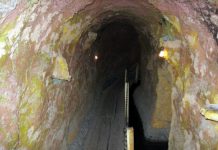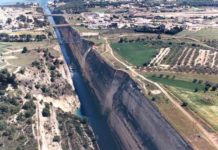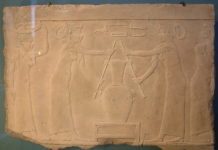
On January 23, 1960 Jacques Piccard and Don Walsh pulled off a feat so great people who have tried to break their record eventually don’t even dare try and come close.
It started innocently enough with an idea Piccard had to try and reach the deepest point in the Pacific Ocean’s Marianas Trench. With the help of Navy Lieutenant Don Walsh both men would wind up setting a deep diving record when their bathyscaphe The Trieste reached a level of 35,810 feet. That record will likely never be bested, and people who have set out with the idea of beating that record have turned back at the 26,000 foot mark for fear of their submersibles imploding due to the great pressure.
The Trieste was designed by Austrian scientist and engineer Auguste Piccard, Jacques father, as a bathyscaphe, or “deep boat.” Before bathyscaphe’s, the deepest diving vessels were bathyspheres which were steel spheres lowered and raised by a cable attached to a mother ship overhead. The Trieste and the bathyscaphe’s that proceeded it, on the other hand, could descend and ascend on their own.
The Trieste was over 50 feet long, and its deck, rails and conning tower made it look just like a submarine. Most of it though consisted of floats filled with gasoline, 70 tons of it to be exact. Gasoline is lighter than water, and provided great buoyancy. The air tanks at either end of the ship allowed it to float on the surface before the beginning of any dive. Piccard and Walsh would be confined to a six foot diameter, 14 ton spherical steel capsule at the base of the submersible.
The descent begin when the air tanks were flooded with sea water. Nine tons of steel pellet shot helped them to sink. The gasoline compressed as the depth increased and the craft became less buoyant. Almost five hours after they left the surface, Piccard and Walsh touched down on the floor of the very deepest part of the ocean, where error has no room and the crushing pressure exceeds 16,000 pounds per square inch. That is more than a thousand times greater than the pressure at sea level. Piccard noted that he saw only one fish swim by during the initial arrival there. They also noted that the bottom was a very dark world that was pitch black outside of the light they brought with them. After barely 20 minutes at the bottom of the ocean the men released the steel shot and began their rise to the surface. The ascent itself took only 3 hours and 15 minutes.
Jacques Piccard’s son Bertrand has continued with the family tradition of ballooning, deep sea exploring and aeronautics by commanding the first hot air balloon to fly around the world in 1999.
The Trieste was later used to locate the sunken nuclear submarine the U.S.S. Thresher. It also collected photos and other data from another sunken submarine, the U.S.S. Scorpion, but it would never again touch the bottom of the sea. The original Trieste is now on display at the Navy Museum in Washington, DC.







